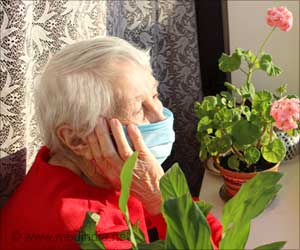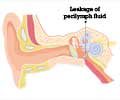COVID-19 patients could suffer from posturaltachycardia(POTS)symptoms - rapid heart rate, dizziness upon standing months after they have recovered.
Highlights :
- POTS emerging as 'long-haul' symptom months after COVID-19 infection
- Postural orthostatic tachycardia syndrome (POTS) symptoms include rapid heart rate, dizziness upon standing, light-headedness, headache, and palpitations
- Viral illnesses, severe infections, or traumas are usually followed by POTS in 30% to 50% of patients.
Postural Orthostatic Tachycardia Syndrome (POTS)
Postural Orthostatic Tachycardia Syndrome (POTS) is a circulatory disorder which is characterized by an increase in heart rate or tachycardia. POTS condition is most commonly known for causing dizziness upon standing, other symptoms include light-headedness, headache, palpitations, fatigue, blurred vision, brain fog, nausea, and exercise intolerance. POTS usually affects young and middle-aged women. What causes POTS is yet to be known, but it usually follows a viral illness, severe infection, or trauma in 30% to 50% of patients. POTS can be treated with medications (ivabradine (Corlanor), and beta-blockers), diet (increased fluid intake), exercise, and lifestyle changes.COVID-19 Infection and POTS
The case report discusses three Swedish patients, two women and one man, who got diagnosed with POTS over three months after they were suspected of having COVID-19 infections. In 2020, all three of them experienced symptoms similar to the COVID-19 infection, but not all of them sought medical attention or received COVID-19 tests at the time of their symptoms.- The first patient tested negative for COVID-19 on a nasopharyngeal swab test but later on had borderline results on serology tests for the virus.
- The second patient was confirmed to have COVID-19 early on PCR testing.
- While the third patient tested negative for coronavirus repeatedly, they were still referred to a tertiary center for post-COVID-19 follow-up.
Read More..
She adds, "Much remains unknown about the specific mechanisms responsible for the POTS-like symptoms in post-COVID-19 patients or how long these symptoms will last, but chronic symptoms are expected in a subset of patients based on this initial clinical experience."
The researchers stress that a negative COVID-19 test does not mean that the patient has never been infected with COVID-19. These tests need to be interpreted with caution in the context of typical symptoms, and other causes of POTS symptoms like, hyperthyroidism, cardiac disease, anxiety, anemia, metabolic disorders, chronic fatigue syndrome, or deconditioning.
Satish Raj, MD, who was not involved in the study, commented, "This article from Sweden documents what many autonomic clinics are starting to see, which is an increase in referrals for patients with POTS late post-COVID. The full impact of long COVID and long COVID POTS is not yet known. With over 117 million patients who have suffered from COVID-19, we may be seeing many similar patients."
He adds that this report highlights the importance of assessing orthostatic vital signs with a stand test, which can be done in any doctor's office, or even in a patient's home using an automatic blood pressure monitor.
However, David Benditt, MD, questions if this should be labeled as POTS. “It is certainly likely a form of autonomic disturbance that needs more study in terms of its prevalence, cause (e.g., antibodies, neuro humoral agents, virus directly etc.) and ultimate prognosis. Labeling these patients as 'POTS' further confuses an already confused landscape,” he adds.
Reference :
- Long-Haul Post–COVID-19 Symptoms Presenting as a Variant of Postural Orthostatic Tachycardia Syndrome: The Swedish Experience: Madeleine Johansson et al: J Am CollCardiol Case Rep. Mar 10, 2021: DOI: 10.1016/j.jaccas.2021.01.009
Source-Medindia















